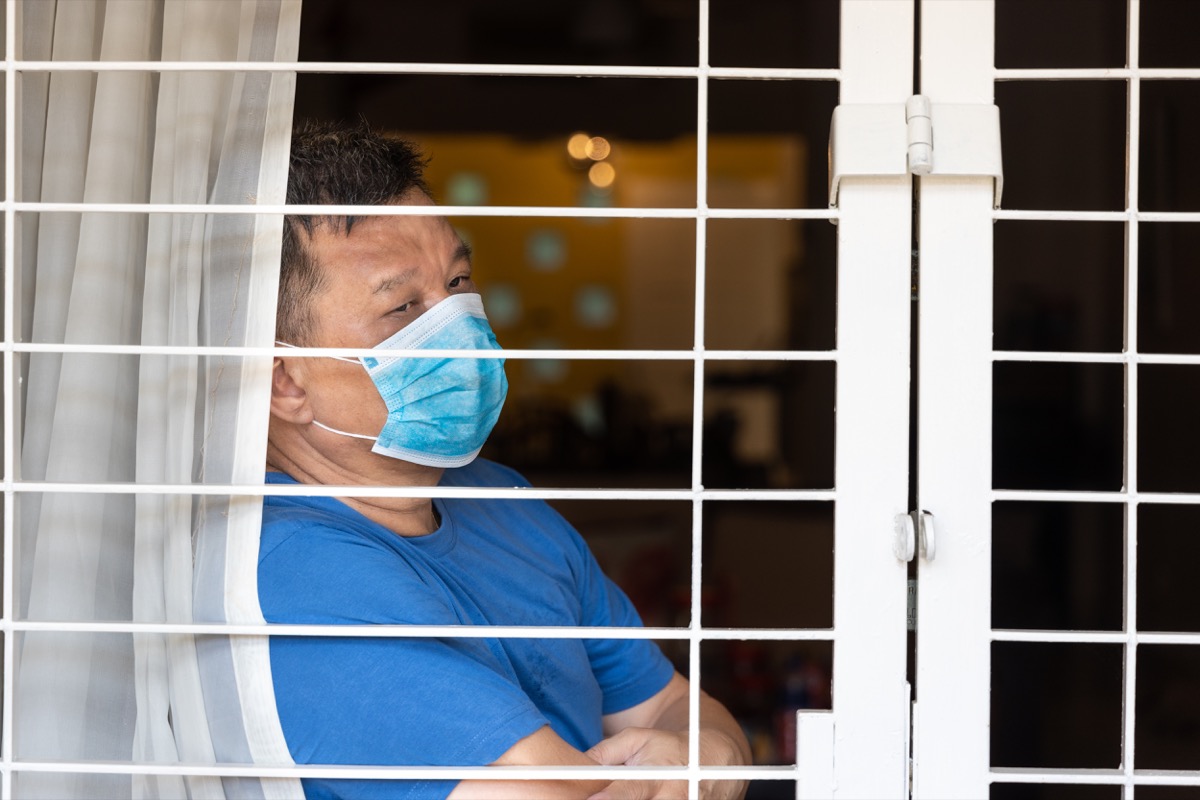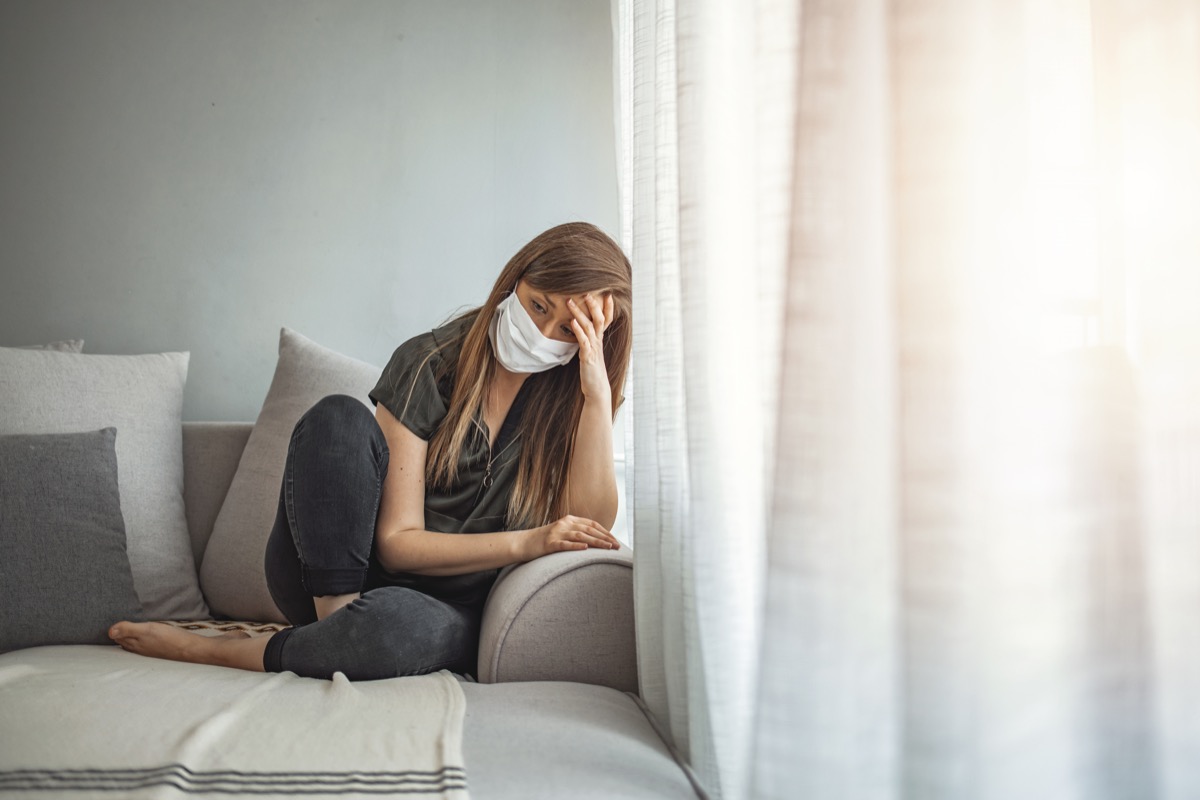“CDC currently recommends a quarantine period of 14 days. However, based on local circumstances and resources, the following options to shorten quarantine are acceptable alternatives,” the agency announced on Dec. 2. “Quarantine can end after Day 10 [of infection] without testing and if no symptoms have been reported during daily monitoring. … Quarantine can [also] end after Day 7 if a diagnostic specimen tests negative and if no symptoms were reported during daily monitoring.” However, the agency says that those who end their quarantines early must practice “continued symptom monitoring and masking through Day 14.” The recent change marks the first revision to the CDC’s rules surrounding quarantining and self-isolating since July, when guidelines were amended to say that COVID-19 patients could leave self-isolation 10 days after their symptoms first appeared if they were no longer sick. The difference between the term “quarantine” versus “isolation” is that the former is used for anyone who’s been in contact with an infected person, but is not confirmed to have COVID. For that group, the CDC has long recommended a 14-day quarantine. “Isolation” guidelines, on the other hand, apply to those who’ve tested positive for COVID. The agency’s new quarantine rules come after weeks of alleged pressure from the White House, according to Politico, with some public health officials sharing a fear that the general public is beginning to grow weary of strict guidelines and are less willing to follow them as cases surge. The CDC first briefed Vice President Mike Pence on the decision in a meeting on Dec. 1, Politico reports. The CDC’s changes were made amid increased evidence that patients are not infectious 10 days into their illness. For example, a new meta-analysis out of the University of St. Andrews, which was published in The Lancet Microbe journal on Nov. 19, found that viral load for the coronavirus is highest five days after symptoms begin, meaning that’s when patients are most likely to infect others. The researchers also said that in none of the COVID-19 studies considered were scientists able to detect “live virus beyond day nine of illness.” That indicates that patients may no longer be infectious nine days after symptoms first appear. However, there’s a catch: Another study published in the Annals of Internal Medicine in May found that though the median incubation period for COVID-19 is estimated to be 5.1 days, like the St. Andrews study found, 97.5 percent of patients who develop symptoms do so within 11.5 days of infection. “These estimates imply that, under conservative assumptions, 101 out of every 10,000 cases will develop symptoms after 14 days of active monitoring or quarantine,” the authors note. This means that a 10-day quarantine wouldn’t be the safest option to prevent exposure to others. The authors point out that “after 14 days, it is highly unlikely that further symptomatic infections would be undetected among high-risk persons.” However, “this method does not consider the role of asymptomatic infection,” which we know is a common way the virus spreads. Read on to see what else the new CDC quarantine guidelines say, and for the latest COVID news, If You Have One of These Blood Types, You May Be Safe From COVID. Read the original article on Best Life. “CDC continues to recommend quarantine for 14 days to more completely reduce the risk of spread of COVID-19,” the guidelines note. “With this [new] strategy, residual post-quarantine transmission risk is estimated to be about 1 percent with an upper limit of about 10 percent.” And for more on where COVID surges are the worst, check out This Is How Bad the COVID Outbreak Is in Your State.ae0fcc31ae342fd3a1346ebb1f342fcb “A 14-day quarantine can impose personal burdens that may affect physical and mental health as well as cause economic hardship that may reduce compliance,” the agency notes. “The prospect of quarantine may dissuade recently diagnosed persons from naming contacts and may dissuade contacts from responding to contact tracer outreach if they perceive the length of quarantine as onerous.” The CDC hopes that “reducing the length of quarantine will reduce the burden and may increase community compliance.” The agency adds that “shortening quarantine may increase willingness to adhere to public health recommendations but will require evaluation; not only in terms of compliance with quarantine and contact tracing activities, but also for any potential negative impacts such as post-quarantine transmission.” And for more regular updates on COVID, sign up for our daily newsletter. “Although daily monitoring for symptoms of COVID-19 illness reduced the estimated post-quarantine transmission risk, addition of diagnostic testing for a person who remained asymptomatic substantially reduced the estimated post-quarantine transmission risk, especially after Day 5,” the CDC explains. Based on a model the CDC used to come to their new COVID quarantine guidelines, if a person was monitored for symptoms but did not get tested, 10 days after their potential exposure, their chances of transmitting COVID was 1.4 percent. However, if someone was tested up to 48 hours before Day 10 of possible infection, the transmission risk was slashed to 0.3 percent. And for more on the test you shouldn’t be taking if you have no COVID symptoms, check out If You’re Asymptomatic, This COVID Test Could Fail You. The CDC plainly writes: “Any option to shorten quarantine risks being less effective than the currently recommended 14-day quarantine.” The agency continues that “these recommendations for quarantine options shorter than 14 days balance reduced burden against a small but non-zero risk of post-quarantine infection that is informed by new and emerging science.” And for more on your risk of getting sick, check out It Only Takes This Long to Get COVID in a Room With Someone Who Has It.



